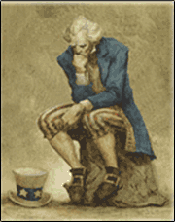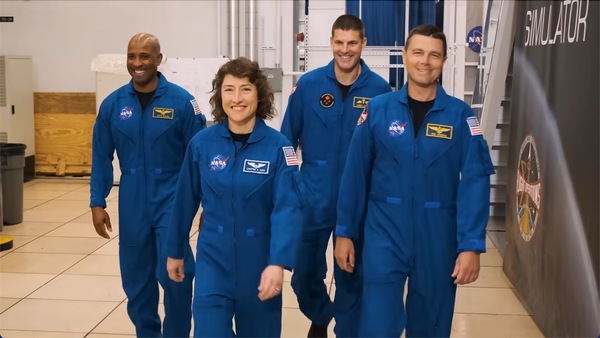
(function(d, s, id) { var js, fjs = d.getElementsByTagName(s)[0]; if (d.getElementById(id)) return; js = d.createElement(s); js.id = id; js.src = “https://connect.facebook.net/en_US/sdk.js#xfbml=1&version=v3.0”; fjs.parentNode.insertBefore(js, fjs); }(document, ‘script’, ‘facebook-jssdk’)); –>
–>
February 4, 2024
As you may have heard, the beloved 1939 classic The Wizard of Oz will be rebooted by “black-ish“ director Kenya Barris to showcase “people of color” as the leads in the film.
‘); googletag.cmd.push(function () { googletag.display(‘div-gpt-ad-1609268089992-0’); }); document.write(”); googletag.cmd.push(function() { googletag.pubads().addEventListener(‘slotRenderEnded’, function(event) { if (event.slot.getSlotElementId() == “div-hre-Americanthinker—New-3028”) { googletag.display(“div-hre-Americanthinker—New-3028”); } }); }); }
Haven’t we seen that reboot already, you might ask? Yeah, we did. It was 1978’s The Wiz, starring Diana Ross and Michael Jackson. But that movie traded the backdrop of a poor farm in rural Kansas to an apartment building in Harlem, and this one will be moving the story to Inglewood. And that’s different enough to be interesting, we’re meant to suppose.
Barris has also committed to rebooting the classic Frank Capra Christmas movie It’s a Wonderful Life, with “people of color” supplanting the largely white cast of the 1946 original.
“It’s a guy who’s trying to help his community, and things are going to turn around him,” Barris says. “I think that’s the perfect story to tell for a person of color – Black or brown – to get into that because our communities have some issues and someone trying to help that community out. I think that’s the perfect vehicle to tell that story from.” [sic]
‘); googletag.cmd.push(function () { googletag.display(‘div-gpt-ad-1609270365559-0’); }); document.write(”); googletag.cmd.push(function() { googletag.pubads().addEventListener(‘slotRenderEnded’, function(event) { if (event.slot.getSlotElementId() == “div-hre-Americanthinker—New-3035”) { googletag.display(“div-hre-Americanthinker—New-3035”); } }); }); }
The inference, in that incoherent mess of supposedly English sentences, is that “people of color” might better relate to the story of the original film in today’s world, in which Jimmy Stewart’s character is struggling in his personal life and contemplates suicide. There’s a terrible, dark sort of irony in the suggestion that, today, this storyline relates more to “people of color” than to a white man, as the original portrays. Suicide rates in this country are climbing at an alarming rate, and white Americans are twice as likely to commit suicide than either black or Hispanic Americans.

Image: The politically correct Artemis II astronauts. YouTube screen grab.
The biggest problem with these ideas isn’t that they’re uninspired and unrealistic in the modern world, though those are definitely problems. It’s that these films are unnecessary and, more importantly, entirely uninteresting.
Where are these legions of fans that want to see diversity, by way of race or gender swaps in classic movies for characters that they’ve seen a dozen times before?
Seriously, do you know anyone who responded to 2014’s race-swapping of that little redheaded orphan Annie and Daddy Warbucks by declaring, “Oooh, I just can’t wait to see that!” Or, perhaps, anyone who was just champing at the bit to see a gender-swapped crew of Ghostbusters strap on their proton packs and save New York?
I certainly didn’t.
This is about the point where some of those preemptively celebrating the race-swapped reboots of The Wizard of Oz and It’s a Wonderful Life as groundbreaking cinematic achievements will pretend to wonder why we conservatives are making such a big deal of all this. The changing of a movie character’s race shouldn’t matter, we’re told.
‘); googletag.cmd.push(function () { googletag.display(‘div-gpt-ad-1609268078422-0’); }); document.write(”); googletag.cmd.push(function() { googletag.pubads().addEventListener(‘slotRenderEnded’, function(event) { if (event.slot.getSlotElementId() == “div-hre-Americanthinker—New-3027”) { googletag.display(“div-hre-Americanthinker—New-3027”); } }); }); } if (publir_show_ads) { document.write(“
Au contraire, writes Alex Miller at Newsweek, who happens to be black while favoring black representation in movies, and yet still disagrees with pigeonholing such characters into woke reboots:
People argue that “The Little Mermaid” is a mermaid and her color shouldn’t matter. But if changing the race of a character is ok because race isn’t relevant as so many have said, then why make the character Black at all? As soon as you do that, you’ve literally made race important enough to change it. [sic]
It’s a great point, of course, but one that certainly won’t stick with the intended woke readers who need to hear it.
Spending hundreds of millions of dollars on ideas that we know to be dreadfully boring regurgitations of something that we’ve already experienced before isn’t innovation. It’s an obvious substitute for innovation.
And, though Hollywood really seems to enjoy it, it’s just a terrible use of resources. Especially companies like Disney, which lost a billion dollars on four 2023 flops by August, and that was before its girl-boss opus, The Marvels, became the biggest comic book theatrical flop in recent memory.
Well, this stupid and expensive idea has been taken to the “final frontier,” as it were, with NASA’s “Artemis” missions, which are slated to land human beings on the moon for the first time since 1972.
The good news, I thought, is that America is going back to the moon. As an American kid growing up in the 1980s, America’s superiority in the realm of space exploration was something of which you were never in doubt. We crushed the Soviets in the Space Race, and nobody in the world could replicate our greatness.
That was the good news. The bad news is that this reboot of the Apollo moon landings is also being made for all the wrong reasons.
Why was the name “Artemis” selected for these missions, you might ask? I’m no insider, but I know my Greek mythology, and it doesn’t take a genius to figure it out.
It’s because those crafting the marketing around this multi-billion-dollar government expenditure think it’d be super-neat to have a fierce goddess symbolizing this NASA mission instead of that blonde dude, Apollo, who was just a symbol of the patriarchy.
You know, that awful patriarchal society that led not only to the invention of vehicles capable of flight with the Wright brothers at Kitty Hawk, but to the cultivation of rocket technology and the development of lunar landing modules capable of putting a human being’s feet on a celestial body hundreds of thousands of miles away, and vessels returning him safely to Earth, in a matter of just sixty years.
It’s worth reiterating that no other nation in the world has accomplished this feat, and we didn’t do this just once. We did it six times.
Proving that God has a sense of humor, countless numbers among the supposedly most educated youth who ever lived don’t believe that an American moon landing could have happened once, much less six times.
Interestingly, on that sixth moon landing in 1972, which was the most successful Apollo 17 mission up to that point, the “mundane” footage of men walking on the surface of the moon was broadcast at halftime of Monday Night Football.
“The fact is that pictures, no matter how incredibly good their technical quality, of barren moonscapes and floating astronauts become ordinary and even tedious rather quickly,” wrote the New York Times.
C’mon, that’s unintendedly pretty funny today, isn’t it? What many of today’s children and young adults imagine to be so impossible that it must have been staged in a sound studio or some stupid thing, was once so mundane and uninteresting that it was relegated to a halftime commercial.
I love the idea that Americans will again walk on the moon. I love the idea that Americans might be leading the way, innovating in the way of space exploration.
But this won’t be like the Apollo missions, NASA will have you know. In the very first sentence describing the purpose of the Artemis missions, the website says:
With Artemis missions, NASA will land the first woman and first person of color on the Moon, using innovative technologies to explore more of the lunar surface than ever before.
Oh, you might be thinking. Yeah. So, it’s gonna suck.
And you’re probably right. NASA, like Hollywood, just expects that we’ll clap for their efforts toward diversity, rather than demand that they do something new and interesting with the money that we give them.
<!–
–>
<!– if(page_width_onload <= 479) { document.write("
“); googletag.cmd.push(function() { googletag.display(‘div-gpt-ad-1345489840937-4’); }); } –> If you experience technical problems, please write to [email protected]
FOLLOW US ON
<!–
–>
<!– _qoptions={ qacct:”p-9bKF-NgTuSFM6″ }; ![]() –> <!—-> <!– var addthis_share = { email_template: “new_template” } –>
–> <!—-> <!– var addthis_share = { email_template: “new_template” } –>





